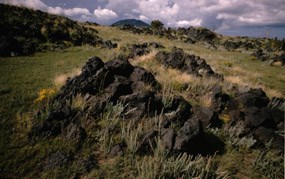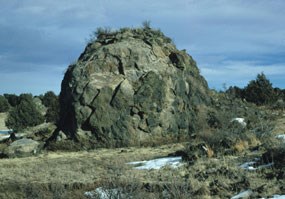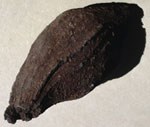
NPS photo 
NPS photo
Lava cascades and levees formed as the lava flowed, while caves and lava tubes formed beneath the crust as the lava drained away. These lava tubes and caves are quite fragile, and so no intact lava tubes or caves may be found in the park today.

NPS photo
Two types of lava flows formed depending on the temperature and viscosity of the lava: fluid lava flows called pahoehoe forms smooth or ropy surfaces, while ‘A ‘a lava has a rough, jagged surface.

NPS photo |
Last updated: April 24, 2025
